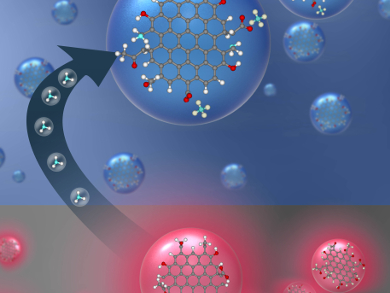Carbon dots (CDs) have been attracting tremendous attention due to their unique optical properties coupled with low toxicity and facile functionalization. They have been tested for applications such as sensing, bioimaging, and the development of optoelectronic devices.
Xing-Can Shen, Hong Liang, Guangxi Normal University, Guilin, China, and colleagues have developed a low-cost, one-step approach to prepare rare red-emitting CDs using sugar cane bagasse as the carbon precursor. They used these CDs to coat a commercially available polyvinylidene fluoride (PVDF) membrane and obtained a sensor capable of selectively distinguishing toxic gaseous ammonia from other analyte vapors through sensitive fluorescence quenching with a low detection limit.
The team also studied the mechanism of thefluorescence quenching, and found that it probably happens as a result of ammonia-induced Michael addition, through insertion of N into the C=C group and deprotonation of the carboxyl group. They hope that this research will provide a pathway for the preparation of CDs for diverse sensing applications as well as opening the door to understanding the mechanism of the surface chemistry of CDs.
- Selective Probing of Gaseous Ammonia Using Red-Emitting Carbon Dots Based on an Interfacial Response Mechanism,
Bang-Ping Jiang, Bo Zhou, Xing-Can Shen, Yun-Xiang Yu, Shi-Chen Ji, Chang-Chun Wen, Hong Liang,
Chem. Eur. J. 2015.
DOI: 10.1002/chem.201502731



